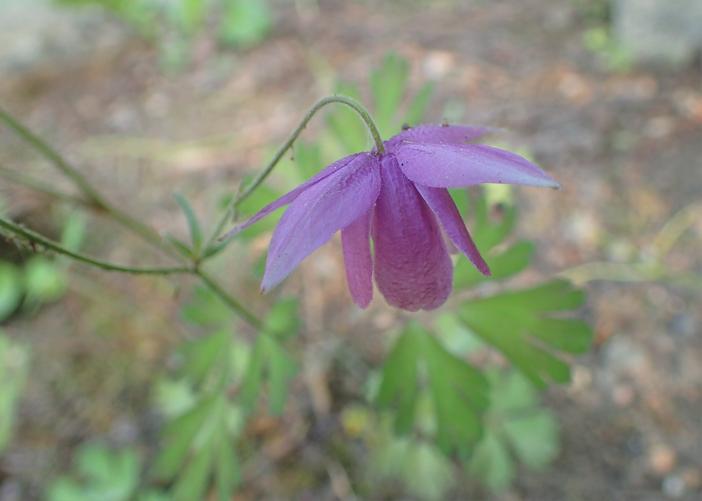Spurless Columbine
(Aquilegia ecalcarata)
Spurless Columbine (Aquilegia ecalcarata)
/
/

Krzysztof Ziarnek, Kenraiz
CC BY-SA 4.0
Image By:
Krzysztof Ziarnek, Kenraiz
Recorded By:
Copyright:
CC BY-SA 4.0
Copyright Notice:
Photo by: Krzysztof Ziarnek, Kenraiz | License Type: CC BY-SA 4.0 | License URL: https://creativecommons.org/licenses/by-sa/4.0 | Uploader: Kenraiz | Publisher: Wikipedia Commons














Estimated Native Range
Summary
Aquilegia ecalcarata, commonly known as Spurless Columbine, is a semi-deciduous perennial herb that is native to alpine meadows and forest margins in North and Central China, including Tibet. It typically grows to a height and width of 2-3 feet (0.6-0.9 meters), featuring a clumping form. The plant is notable for its unique spurless flowers, which come in shades of pink and purple, blooming profusely in late spring to early summer. The flowers are less showy compared to other columbines due to the absence of spurs but are still attractive to pollinators such as bees and hummingbirds.
Spurless Columbine is valued for its ease of maintenance and its ability to thrive in cooler climates. It is often used in border plantings, woodland gardens, and as part of naturalistic plantings. While it prefers full sun to part shade, it requires protection from intense afternoon sun in hotter regions. It is adaptable to a range of soil types, provided they have good drainage. Regular watering is necessary, especially in drier conditions. This species has been recognized with the Royal Horticultural Society’s Award of Garden Merit, indicating its reliability and performance in gardens. Potential problems include leaf miners and powdery mildew, but these are generally not severe. It is important to note that while Aquilegia ecalcarata is not typically invasive, columbines can self-seed and may spread in the garden if not managed.CC BY-SA 4.0
Spurless Columbine is valued for its ease of maintenance and its ability to thrive in cooler climates. It is often used in border plantings, woodland gardens, and as part of naturalistic plantings. While it prefers full sun to part shade, it requires protection from intense afternoon sun in hotter regions. It is adaptable to a range of soil types, provided they have good drainage. Regular watering is necessary, especially in drier conditions. This species has been recognized with the Royal Horticultural Society’s Award of Garden Merit, indicating its reliability and performance in gardens. Potential problems include leaf miners and powdery mildew, but these are generally not severe. It is important to note that while Aquilegia ecalcarata is not typically invasive, columbines can self-seed and may spread in the garden if not managed.CC BY-SA 4.0
Plant Description
- Plant Type: Herb
- Height: 2-3 feet
- Width: 2-2.5 feet
- Growth Rate: Moderate
- Flower Color: Pink, Purple
- Flowering Season: Spring, Summer
- Leaf Retention: Semi-Deciduous
Growth Requirements
- Sun: Full Sun, Part Shade
- Water: Medium
- Drainage: Medium
Common Uses
Bee Garden, Bird Garden, Border Plant, Butterfly Garden, Deer Resistant, Hummingbird Garden, Low Maintenance, Potted Plant, Rabbit Resistant, Rock Garden
Natural Habitat
Alpine meadows and forest margins
Other Names
Common Names: False Columbine
Scientific Names: , Semiaquilegia ecalcarata, Aquilegia ecalcarata, Aquilegia ecalcarata f. semicalcarata, Semiaquilegia simulatrix, Aquilegia semicalcarata, Semiaquilegia ecalcarata f. semicalcarata,
GBIF Accepted Name: Aquilegia ecalcarata Maxim.